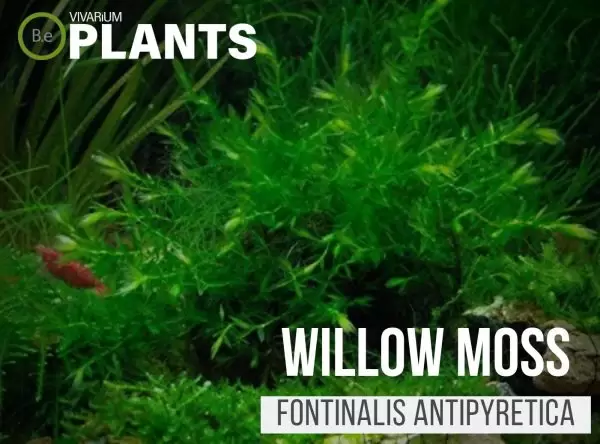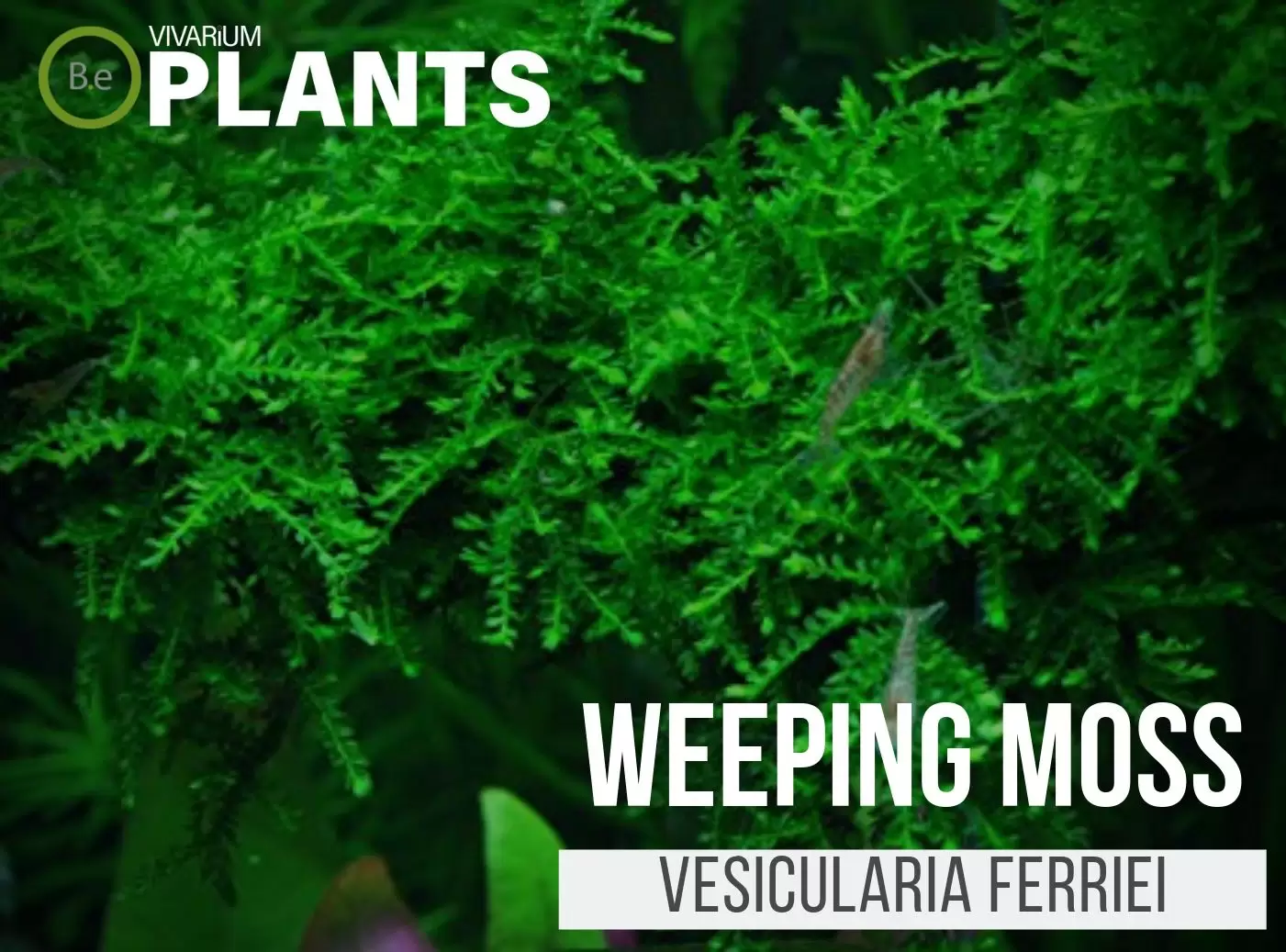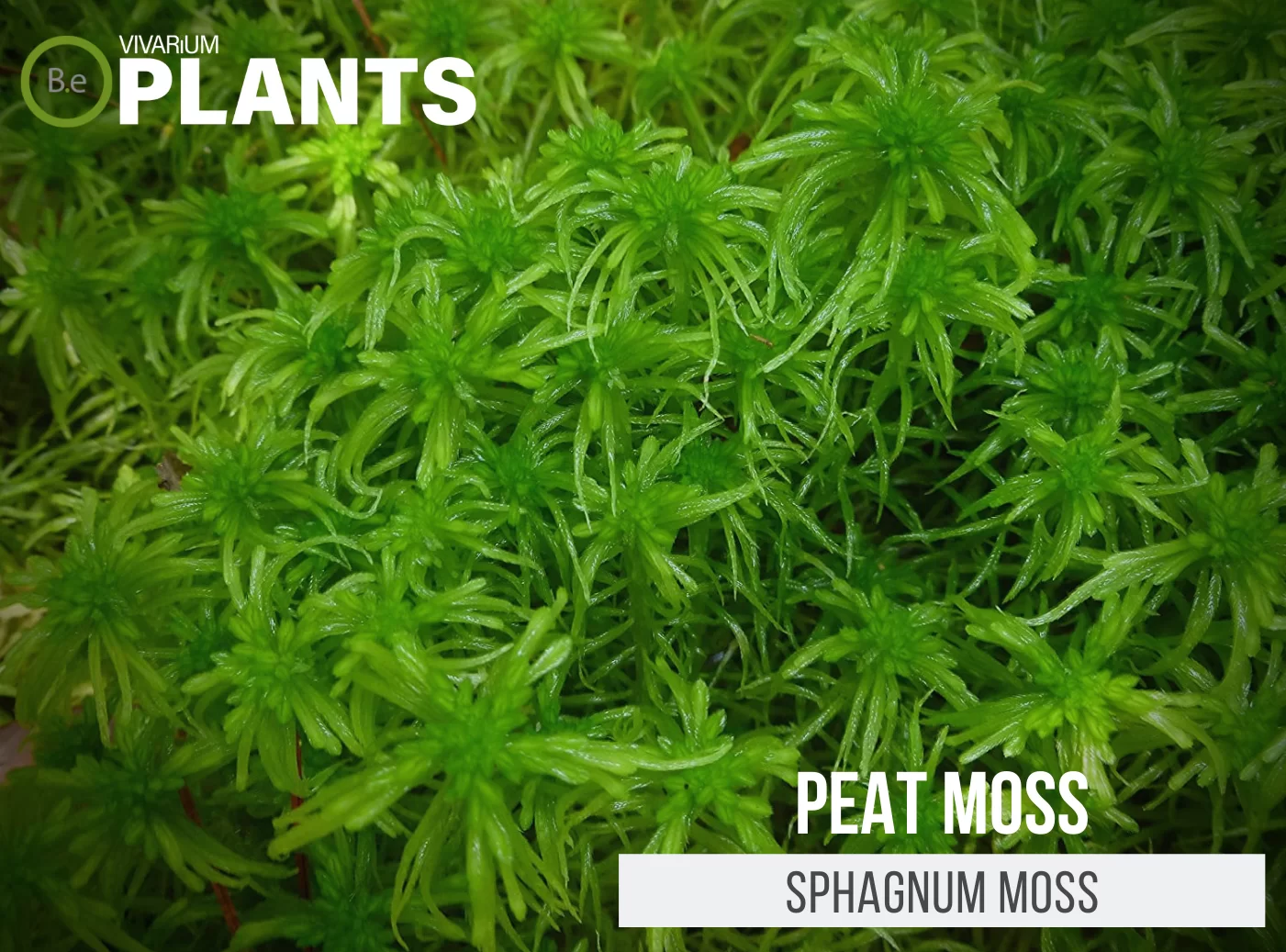Willow moss (Fontinalis antipyretica) is a great aquarium plant to have in aquatic enclosures.
Its ability to absorb minerals, and tolerate lower temperatures as well as low light requirements, are all reasons to consider using it in a vivarium.
The pleasing look of this moss is great for adding diversity to underwater settings and its close resemblance to other more familiar mosses makes it an easy transitional plant to pair with others.
The caretaking for this plant is minimal, making it a wonderful plant to have for any level enthusiast.
| Quick Stats: | |
|---|---|
| Scientific Name | Fontinalis antipyretica |
| Common Name | Willow Moss, Greater Water Moss, Common Water Moss, Antifever Fontinalis Moss |
| Family Name | Fontinalaceae |
| Habitat | Cool Water, Freshwater |
| Temperature | 59°F to 82°F |
| Height | 24 inches |
| pH | 5.5 to 7.5 |
| Lighting | Medium |
What Is Willow Moss?
Fontinalis antipyretica is a species of moss in the Fontinalaceae family.
This moss is commonly referred to as willow moss due to its willow tree-like appearance.
Though this moss is not a fairly new bryophyte to the world, it has recently become a more sought-after plant to put in cooler water aquariums.
Another reason for its recent rise in popularity may be due to the fact that Fontinalis shares a lot of visual similarities to the very well-known plant, Java Moss.


Willow Moss Facts
Fontinalis antipyretica is commonly referred to as Willow Moss due to its striking resemblance to willow trees.
This plant is also commonly known as Greater Water Moss, Common Water Moss, and Antifever Fontinalis Moss.
An interesting fact about Fontinalis antipyretica is its scientific name in Latin translates to “the water moss that stops a fire.”
Not quite sure if it, in fact, lives up to its name but I can’t imagine many fires having much luck underwater… So willow moss has my vote!
Description
Willow moss has a very common look when comparing it to other aquatic mosses. As I stated earlier, this plant closely resembles Java moss.
The distinguishable difference between the two is the size of the leaves and branches of each plant.
Willow moss looks significantly larger, bearing a thicker branch and stem system as well as bigger leaves sprouting from it.
Fontinalis generally comes in various shades of green. The more sunlight it receives typically makes it darker.
If the moss starts to brown or appear tannish in color, it either isn’t receiving enough light or is above water for too long.
The oval-shaped leaves that grow from willow moss can get up to a quarter-inch in length.
The stringy stems that branch out from the base are firm, spinely, and can get up to 24 inches in length.
Habitat
Willow moss is thought to be native to the upper region of North America but can be found in Europe, Asia, and Africa.
The environment this freshwater plant is accustomed to is fast-flowing rivers and springs. This bryophyte is often found caught between stones and fallen debris in the wild.
One thing I find extremely interesting about this plant is its preference to tolerate lower temperatures than other mosses.
Willow Moss is a cold water thriving plant, making it great for aquariums that house cold water inhabitants like Goldfish.
Considerable temperatures will range between 59 and 82 degrees Fahrenheit.
PH Preference
Another well-liked feature of willow moss in the aquascaping hobby is its hardy tolerance to various types of water conditions.
Most bryophytes typically like to stay around the acidic side of the pH scale… But this moss can tolerate pH levels as high as 8.5!
That’s an awesome good-to-know fact if your current tank has hard water conditions and you really the idea of adding a tolerable moss to the enclosure.
A thriving pH range to consider keeping this plant around would be anything higher than 5.5 but no higher than 7.5.
Vivarium Type
This type of moss will do great in a variety of vivarium types.
When deciding if rather or not to use willow moss in a particular type of enclosure, Be sure to go with setups that have some level of aquatic areas.
Here are recommended vivariums that this plant will do well in:
- Paludariums – Half aquatic/ half terrain-based enclosure.
- Ripariums – Mostly aquatic-based enclosures with some terrain features present.
- Aquarium – Fully aquatic-based enclosures with little to no dry terrain.
Vivarium Placement
When it comes to vivarium placement for this type of Fontinalaceae, it can go in a number of places as long as it remains fully submerged in water.
Being a centerfold type of plant, it would do really well-accenting hardscapes in the foreground area of the enclosure.
Place it around rocks or tie it to wood branches and allow it to fully establish itself before pruning.
It should go in an area that receives some level of light and it will eventually creep its way horizontally making a nice lushes carpet.
Substrate
Substrates can play a role in helping willow moss anchor to the desired position.
Any type of aquarium media will do fine for this moss since it will not need it to absorb nutrients.
As I mentioned earlier, Fontinalis can latch onto any type of firm surface so the substrate is not an absolute necessity when caring for this plant.
Rocks, wood, sand, gravel, and dirt are all-sufficient substrates that can be used to help lock willow moss into place.
Lighting
The chilly rivers this plant is native to have shaded and indirect sunspots this plant spends most of its time on.
Fontinalis antipyretica can handle moderately bright lighting scenarios but will do best in lower light elements.
Avoid direct sunlight and bright light sources. Sunlight could alter the temperature of the vivarium resulting in a warmer, more undesirable water condition.
This moss should be given moderate to low levels of artificial light since it usually takes shelter in shallow riverbeds in the wild.
Buy Willow Moss
When shopping for possible willow moss, expect a few key indicators you are buying the best quality plant.
The moss should be snail free along with any other type of pest. The source of moss will usually be sold in small tissue cultures, ready for you to propagate.
The batch should arrive fairly moist and in fairly good shape. Click the image below to find out more about the current price and other relative info:


Willow Moss Care and Propagation
Fontinalis antipyretica, are great very hardy, and tolerable plants that are great for beginner enthusiasts.
That does not go without stating that it does still some requirements when it comes to maintaining this moss.
Here are a few need-to-know tips when it comes to the care and propagation of willow moss:
How to grow
The safest and most efficient way to harvest willow is through the process of division.
Breaking a culture into separate pieces won’t hurt this plant and is a preferred method when it comes to most bryophytes.
Once separated and tied down to an ideal spot in the aquarium, allow the plant a few weeks to latch down and resume growing before tampering with it again.
A creeping growth of new branches is a good sign of success and once that takes place you can trim unwanted stems…
Or further, divide the colony once more and reapply the process.
Watering
Being a fully aquatic plant, willow moss will only require the usual water changes any other plant of this type would require.
Willow moss should never be left out of the water for long periods of time or it will start to brown and wither away.
If for any reason the brown color sets in, simply replacing the plant in ideal water conditions should promote regrowth and browner areas that can be trimmed away.
Plants Similar To Willow Moss
Adding diversity to an enclosure is key to an aesthetically pleasing enclosure.
Try mixing up the look of your vivarium with different flora that can easily co-exist in the same environment.
Furthermore, if for some reason you find this moss hard to acquire or would like to consider something similar to this plant…
Here are some other plants you might find may do well with or in the place of Fontinalis antipyretica:
Conclusion
As far as any level of expertise is considered, Willow moss is a very forgiving type of aquarium moss.
The ability to regenerate itself back to good health makes this moss one of the best vivarium plants to work with.
Not only would this type of bryophyte do well in a number of setups…
The hardiness of it makes it tolerable to changing water conditions. Another really cool takeaway with this plant that wasn’t really covered earlier is its ability to absorb some metals.
Depending on the water temperature, Fontinalis antipyretica has the ability to absorb metals like zinc and cadmium.
Another good reason to have this plant stocked in community vivariums where good water quality is a must.
Frequently Asked Questions
Willow Moss (Fontinalis antipyretica) is a type of aquatic moss found throughout much of the Northern Hemisphere. It grows in shallow, cold, and slow–moving to still water, and is an important food and habitat for many species of fish and aquatic invertebrates. It is a major component of headwater streams and can provide important benefits to riverine ecosystems.
Willow Moss (Fontinalis antipyretica) is an aquatic plant that grows in clusters of small, thread–like shoots. It has bright green, serrated, and often twisted leaves, turning brown and brittle when it gets old. Its stems can reach a length of up to approximately 24 inches, and it spreads quickly by creeping runners.
Yes! Willow Moss (Fontinalis antipyretica) is an excellent choice for aquariums. Not only is it hardy and easy to care for, but it provides a beautiful, lush backdrop to your tank and many fish enjoy swimming through and around the tendrils. It also naturally removes excess nitrates and phosphates from the water, improving water quality.
Willow Moss (Fontinalis antipyretica) can survive out of water. This type of moss is classified as a semi–aquatic species that can survive in a variety of habitats, including intermittently moist soil, wet rocks, and damp logs. Depending on the environment where it is growing, this moss can survive out of water for brief periods of time. However, it should never be left out of the water for long periods of time or it will start to brown and wither away.



